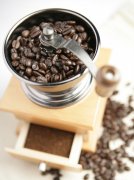Ground Fresh Coffee or Harmful Fine Coffee Basics

More and more specialty shops are opening up to attract fresh coffee, but the rich and attractive aroma hides high concentrations of caffeine. Hong Kong Ming Pao tests show that a cup of ordinary medium cup of instant coffee on the market has 150 to 200 mg of caffeine, of which Starbucks has the highest caffeine concentration. Office workers have 3 cups of morning, afternoon and evening refreshments, which has exceeded the recommended maximum intake of 300 mg for adults.
Doctors warn that excessive caffeine intake can lead to "coffee syndrome" at any time, causing stress, irritability, anxiety, hand tremors and insomnia.
Hong Kong's Ming Pao Daily News reported that the newspaper sampled five chain coffee shops in the market at the end of last month, including Starbucks, Pacific Coffee, PretA Manger, McCafe of McDonald's and fresh coffee of Delifrance.
The results showed that Starbucks, which often emitted strong coffee aroma from subway stations, had the highest caffeine content, with about 197 mg in a 260 ml medium cup, followed by McCafe with 164 mg in a 280 ml medium cup, and Pacific Coffee with 153 mg in a 290 ml medium cup.
As for White Americano, which is traditionally considered weak, it has a lower caffeine content in the variety sold by Pret A Manger, with a medium cup of 310 ml containing only 108 mg of caffeine.
It is reported that Taiwan in August this year launched instant coffee "traffic light" mark, coffee shops to indicate the caffeine content of each coffee on the menu, the content of 100 mg or less for green light, 100 to 200 mg yellow light, more than 200 mg for red light, it is best not to drink more than one cup a day. however, major coffee shops in hong kong do not disclose the caffeine content of their coffee drinks, making it difficult for the public to make healthy consumption choices.
As to whether Hong Kong will make reference to Taiwan's experience and encourage traders to implement a system similar to "traffic lights", FEHD said that "this is not a food safety concern, but it is also a good thing for consumers to provide more information on food composition, and the Department welcomes it". The Consumer Council agrees that this is beneficial to consumer rights.
according to the european union food science committee, caffeine affects the central nervous system, kidneys and cardio-pulmonary circulatory system. registered dietitian li jingxun, centre for nutrition research, school of public health, the Chinese university of hong kong, and director of the hong kong poison advisory centre liu fei long both pointed out that comprehensive medical literature suggested that caffeine intake for adults should not exceed 300 to 400 mg.
Liu Feilong said that long-term intake of excessive caffeine, or unconsciously chronic caffeine poisoning, that is,"caffeine syndrome", symptoms include mental tension, anxiety, hand tremors, muscle tension, insomnia, palpitations, etc., the cause of the disease is the central nervous system by caffeine effect too alert. He agrees with coffee shops publicizing caffeine content in drinks.
Important Notice :
前街咖啡 FrontStreet Coffee has moved to new addredd:
FrontStreet Coffee Address: 315,Donghua East Road,GuangZhou
Tel:020 38364473
- Prev

Alternative coffee gives you both taste and beauty.
Fragrant coffee is always associated with modern white-collar workers. More and more people like to drink coffee. Besides its bitter taste and attractive aroma, as well as its refreshing effect, coffee can also be cosmetic. Alternative coffee makes both taste and beauty. Let's taste a cup of coffee with endless aftertaste. In this romantic moment, it is both delicious and beautiful.
- Next

Fine Coffee healthy living Coffee can prevent DNA Oxidation
(world Manager Technology Channel) Coffee protects against DNA oxidation and is more effective than fruits and vegetables, according to research. DNA oxidation is the root cause of a series of serious diseases, especially cancer. Tumiletto, a diabetes expert at the University of Helsinki, says that if a person drinks five to six cups of coffee a day, the incidence of Ⅱ diabetes can be halved. And drinking 10 cups of coffee a day, suffering from Ⅱ diabetes.
Related
- Beginners will see the "Coffee pull flower" guide!
- What is the difference between ice blog purified milk and ordinary milk coffee?
- Why is the Philippines the largest producer of crops in Liberia?
- For coffee extraction, should the fine powder be retained?
- How does extracted espresso fill pressed powder? How much strength does it take to press the powder?
- How to make jasmine cold extract coffee? Is the jasmine + latte good?
- Will this little toy really make the coffee taste better? How does Lily Drip affect coffee extraction?
- Will the action of slapping the filter cup also affect coffee extraction?
- What's the difference between powder-to-water ratio and powder-to-liquid ratio?
- What is the Ethiopian local species? What does it have to do with Heirloom native species?

